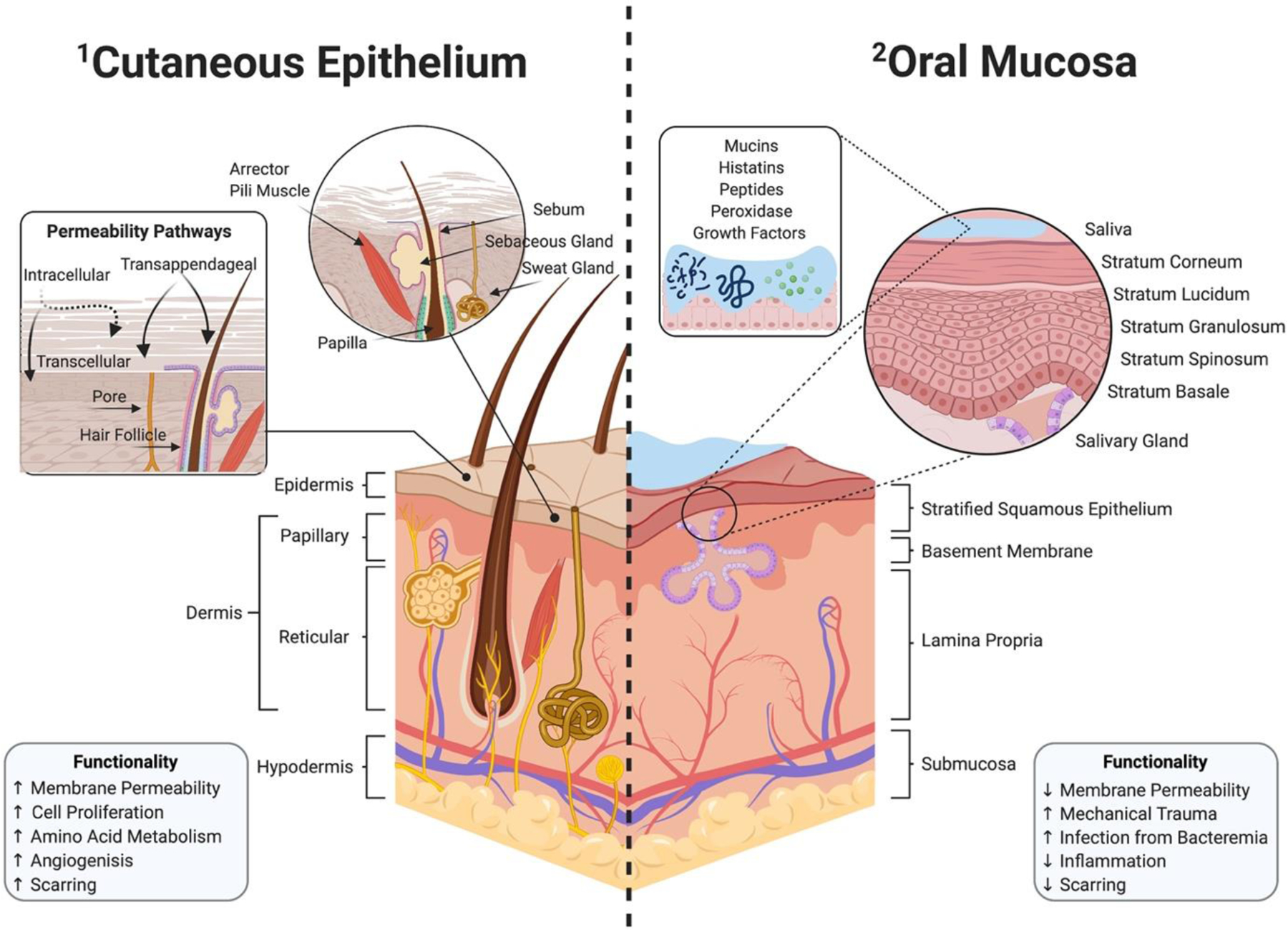Figure 1:

Graphical representation of the structural and functional differences in cutaneous epithelium versus oral mucosa. The cutaneous epithelium consists of three distinct layers: the epidermis, dermis, and hypodermis (1–1). The skin can utilize additional routes for enhanced transcutaneous permeability through intracellular, transcellular, and transappendageal pathways using pores and hair follicles. In contrast, the oral mucosa is composed of stratified squamous epithelium, followed by the basement membrane, lamina propria, and submucosa (1–2). Exclusive to the oral environment, saliva contains mucins, histatins, peptides, peroxidase, and growth factors that play a role in oral homeostasis. An injured oral mucosa is susceptible to infections caused by bacteremia, due to a complex oral microflora with an upward of millions of microorganisms.
